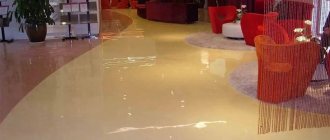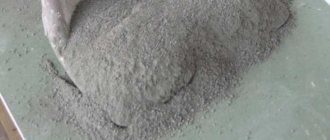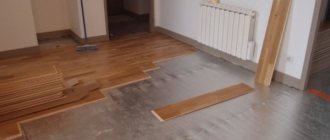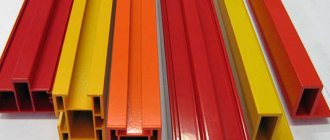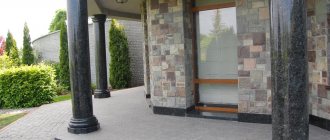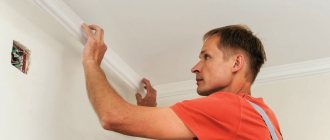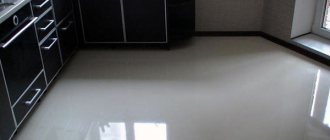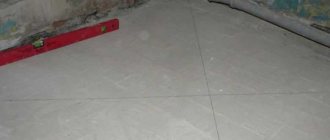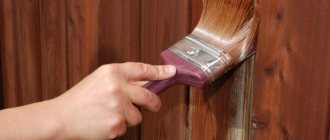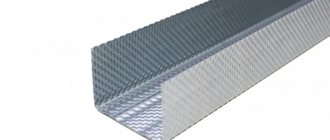Greetings! Repair requires not only financial and physical effort, but also a strong nervous system.
The main advantage of a self-leveling floor is the high speed of formation of an absolutely even, durable layer and the possibility of laying coatings not a month, but just a few days after pouring.
You will find many offers on the construction market, and it is very difficult to choose something truly worthwhile. In this case, many factors must be taken into account to ensure that the dry mixture fits your repair parameters. I will talk about products that are produced under the brands “Starateli”, Weber, “Volma”, “Bolars”, “Osnovit”, Bergauf, Ceresit.
general information
The poured floor appeared on the building materials market relatively recently. Before reaching private apartments and houses, self-leveling self-leveling flooring has gone through a difficult journey. Initially, this building material was intended for use under suspended loads. Such floors were poured in shopping centers, laboratories and industrial premises.
Such places are characterized by increased demands on the floor covering in terms of wear resistance. Ultimately, the introduction of new materials and the development of the technological process for producing floor mixtures made it possible to use it in residential premises.
Quite often, people who have little understanding of the issue confuse self-leveling floors and screeds with the self-leveling effect. Meanwhile, leveling the floor with a self-leveling mixture is the final correction of the surface before laying the topcoat. They can be used - laminate, linoleum, tiles, parquet, self-leveling flooring and so on.
Composition of working mixtures and their features
The physico-chemical properties of the materials that make up the cement-sand screed and self-leveling mixture determine the differences in the implementation of floor pouring technologies.
"Wet" cement screed
The traditional composition for wet cement-sand screed consists of three components: sifted sand, cement and water. Its preparation is carried out by the masters themselves by kneading immediately before use. At the same time, the proportions of elements are also regulated situationally, so the human factor plays an important role here. There is a ready-made dry mixture for cement-sand screed, which is only diluted with water. This mixture contains a small amount of profile modifiers. Modifiers increase the manufacturability of installation and improve the performance characteristics of cement-sand screed, namely:
- improve the mobility of the solution;
- increase the initial setting period of the diluted mixture;
- increase the moisture resistance of the floor;
- increase the strength of the coating and its abrasion;
- increase resistance to deformation under temperature influences, which is important when additionally using “warm” floor technology.
IMPORTANT: With or without the use of modifiers, the process of laying cement-sand mixtures requires the processing of large volumes of materials, as well as significant effort to achieve the effect of a flat surface.
Semi-dry cement screed
By choosing a ratio of components in which the mixture is dominated by a larger amount of sand and relatively little water, it is possible to achieve the effect of rapid hardening of the prepared solution. Semi-dry screed has reduced strength, it often crumbles and crushes, and cannot withstand heavy weight loads. This method is most often used in apartments with a small amount of lightweight furniture, during accelerated repairs.
Dry cement screed
When dry screeding, no water is used at all, since a dry mixture is used to fill the floors. This backfill is leveled mechanically and sheet materials - plywood or gypsum fiber - are placed on top. With its low weight, this screed is suitable for use in private houses on wooden floors. TIP: “Wet” screed, as it is more durable, is more often used in non-residential premises (garages, retail spaces), other types of screed are preferable for apartments and houses with a relatively small area.
Dry screed is most suitable for use in apartments with a flat floor base
Self-leveling self-leveling screed
Compositions for self-leveling floors are manufactured factory-made in the form of dry mixtures or suspensions; they cannot be prepared independently. The mobile liquid consistency of the finished solution allows it to spread freely and level due to gravitational forces. Classification of self-leveling floors is made in accordance with the composition of the mixture. Mineral or polymer compounds can be included in the finished mixture, and therefore self-leveling floors are conventionally divided into:
- epoxy;
- polyurethane;
- epoxy-polyurethane;
- methyl methacrylate.
Polyurethane compounds are characterized by increased elasticity and moisture resistance; they are designed for use under conditions of significant loads and surface compression/expansion, as well as vibration and temperature changes.
An impact-resistant surface is obtained by using epoxy compounds. These two-component compounds are also impact-resistant and can withstand high-intensity mechanical impacts.
Epoxy-polyurethane mixtures are distinguished by strength, resilience and elasticity, and in fact, combine the positive characteristics of mono-component epoxy and polyurethane mixtures.
If a high speed of hardening of the composition is required, it is necessary to use methyl methacrylate compositions - two hours after pouring it is possible to move on the floor surface.
Polyurethane floor screed
Types of self-leveling floor
Self-leveling floor mixtures are currently the most widely used. They can be found ranging from factory premises to cozy apartments. In many ways, when choosing a self-leveling coating, one is guided not only by the desired strength, but also by the material from which the base of the mixture for pouring is made. There are several basic modifications of self-leveling floors.
Liquid floor perfectly levels any surface Source vyboroved.ru
Polyurethane
This coating is based on polyurethane. This material is characterized by increased resistance to compression and tension. It is also characterized by the following qualities:
- resistance to chemical environments;
- resistance to mechanical loads;
- elasticity.
Due to its great flexibility, cracks do not form on the material. This floor is used both in industrial buildings and in buildings intended for public use. The composition is applied to almost any surface, from:
- concrete;
- wood;
- metal
During operation it shows increased resistance to wear.
Epoxy
Epoxy self-leveling flooring has a special resin as its main composition, which is activated by a hardener. Epoxy resin flooring is much harder than polyurethane flooring. This factor makes the epoxy floor somewhat less resistant to impact loads. Floor coverings made of this material are installed in places with high traffic, usually public buildings.
Meanwhile, such floors are becoming increasingly popular in private construction. This is explained by the wide range of colors and the ability to fill in various patterns. The final surface can be glossy or matte. However, working with this material requires a certain professionalism and experience.
Self-leveling polyurethane floor screed Source otdelkagid.ru
Epoxy-urethane
This type of self-leveling floor combines the best qualities of epoxy compounds and polyurethane. The final coating is not only resistant to impact loads, but also has excellent resistance to chemical environments.
In addition, the combination of the main components allows you to fill not only in closed locations, but also in the open air. The combination of great durability and resistance to temperature changes makes these compounds very popular among consumers.
Methyl methacrylate
This polymer self-leveling floor is characterized by an increased pouring speed. In just a couple of hours you can create excellent coverage. The composition hardens in about an hour, and the final strength gain occurs within two hours.
This material is practically not inferior to compositions made from polyurethane or epoxy resin. Moreover, it surpasses them in resistance to sub-zero temperatures. You can install flooring even in the relatively cold season.
However, methyl methacrylate flooring also has its disadvantages:
- taking into account the specific nature of the work, only highly qualified workers can do it;
- high price for this type of coating;
- During work, harmful substances are released and good ventilation is required.
These negative qualities are quite conditional and if you need to carry out work in the shortest possible time, then this coating is the optimal solution.
Polymer self-leveling floor Source stroychik.ru
Cement-acrylic
In this type of coating, the base is a poly-acrylic polymer with a quartz filler. The finished floor practically does not slip when walking. For this reason, such coatings are installed in locations with high humidity:
- car washes;
- swimming pools;
- bathrooms;
- saunas.
One of the main advantages of cement-acrylic coatings is the ability to fill a fairly thick layer - up to 12 millimeters. This allows you to install floors while minimizing preparatory work to level the base. We should not forget about the excellent adhesion of these compounds, which maintain integrity even in the presence of cracks in the base.
See also: Catalog of construction companies that specialize in finishing and paint materials
Advantages of ready-made mixtures
The quality of floor coverings is influenced not only by the material they are made of, but also by the strength of the base. It should be as smooth as possible and withstand all loads without problems, and not change its linear dimensions during temperature fluctuations. Modern self-leveling mixtures fully meet the most stringent consumer requirements.
Self-leveling mixtures have a number of advantages
The advantages of the material include important characteristics.
- Great mechanical strength. This property applies only to cement-based mixtures; gypsum has worse parameters. But each floor covering has its own individual requirements; some are satisfied with the characteristics of gypsum.
- Manufacturability. Working with such materials is much easier than making traditional screeds using semi-dry cement-sand mortars for lighthouses.
- Minimum shrinkage parameters. When hardened, the material almost does not lose its original horizontal characteristics, does not sag, does not swell, or cracks.
- High adhesion values. If you fully follow the manufacturer's recommendations, the likelihood of detachment is almost eliminated. Due to such properties, it is possible to significantly reduce the thickness of the layer, and this is a significant saving in expensive compounds.
To ensure high-quality floor leveling, it is necessary to strictly follow the workflow technology
The only drawback is the relatively high price. But professionals know the secrets to reducing the estimated cost of floor repairs; savings can reach significant amounts.
Choosing a self-leveling floor
When choosing a liquid floor, first of all, the location where it is poured is taken into account. Based on this indicator, preference is given to one or another composition. For example, mixtures made of epoxy resin or polyurethane are most suitable for residential buildings. At the same time, pouring epoxy floors is used in bathrooms, given the high resistance to moisture of such coatings.
3D floor in the bathroom Source dekoriko.ru
For rooms intended for direct living, it is better to use polyurethane mixtures. The thickness of the fill should be within two millimeters. A thinner coating will be less resistant to abrasion, and a thick one will incur unnecessary costs.
Separation by appearance
According to this parameter, self-leveling floors are usually divided into three main categories:
- plain;
- with patterns;
- 3D.
The first type of flooring is available on the market in a wide variety of color shades. The surface can be matte or glossy and they blend easily into any decor. Patterned floors come with pre-made stencils. You can also order an individual drawing or do it yourself.
3D floors create the illusion of a three-dimensional image and two main methods are used for this:
- printing the design on vinyl film;
- applying the image to a previously prepared base using acrylic paints.
Using film when pouring 3D floors is less labor-intensive and much cheaper than the second method.
Finish floor
This concept deserves special attention, since without clarification of specific details, it causes some confusion. To avoid this, it is necessary to distinguish between leveling the base and filling the floor itself. If, after applying the cement screed, a liquid floor is poured, then it can be called finishing. However, as a rule, a finishing coating in the form of linoleum or other material is laid on the cement screed.
3D floor in the living room Source delaypol.com
When pouring a self-leveling floor, many of its varieties require application in several layers. For example, a floor with a picture is applied in the following order:
- base;
- drawing;
- protective covering.
Based on this, such a floor can have its own finishing layer.
Types of leveling mixtures
Liquid flooring is grouped by composition and area of use. The owner must know how to level the concrete floor in the room. Gypsum mixtures of the anhydride type are used for indoor work, and not for outdoors, because they are hygroscopic and do not like moisture. They are laid with a layer thickness of 20 to 100 mm with a long hardening period.
The cement-based leveling mixture can be laid in different climatic conditions, the layer range is from 20 to 50 mm, and the thickening time is 72 hours.
Thick-layer leveling mixture is used as a rough fill and can have a layer of up to 100 mm.
Thin-layer or finishing mixture is suitable for sealing small roughnesses up to 5 mm; laying is carried out after the concrete screed.
Popular brands of liquid flooring are presented in the table.
| № | Brand of dry mix | Leveling thickness, mm | Application area |
| 1. | Unis, fast-hardening, 20 kg | 2-100 | Interior work |
| 2. | Weber-Vetonit, 20 kg | 1-5 | Interior work, finishing |
| 3 | "Volma Level Express", 20 kg | 5-100 | Interior work |
| 4 | BOLARS SV-1, 25 kg | 5-100 | Interior work, finishing |
How to cook it yourself
You can make self-leveling compounds at home when no high demands are made: in storerooms, garages or utility rooms.
For production, as a rule, M500 cement and washed, finely sifted piezoquartz sand are used. The dry composition is prepared in a ratio of cement to sand 1:3. The weighed composition is thoroughly mixed and only upon completion, water is added little by little, without interrupting the mixing process.
Important! The finished solution should be similar in thickness to sour cream. It is allowed to include plasticizers and additional components, for example, special PVA glue is added to the water.
Self-leveling floor device
The base for pouring can be a concrete screed, a floor made of metal, wood or ceramic tiles. The main thing is that the base is relatively smooth and free of unnecessary coatings in the form of paint, varnishes and the like.
Base
To use a liquid floor to level a concrete floor, the base is prepared, it is carried out in several stages:
- the recesses are sealed with cement mixture;
- the cracks are opened and also filled with the mixture;
- the projections are cut down and sanded;
- thorough cleaning of dust is carried out;
- a primer layer is applied to increase adhesion;
- If not all the pores of the base are filled, after the first layer of primer has dried, apply the next one.
After the preparatory work, they begin pouring.
Recommendations for use
If you want your new coating to last you a long time, pay special attention to the rules for using the floor. Depending on the type of composition, the operating instructions for polymer floors may differ slightly. But there are still general recommendations:
- The temperature should remain between -30 and + 45 degrees. For short-term exposure, a temperature of 90 degrees is allowed;
- It is not advisable to spill chemicals on the coating with a concentration of alkalis and acids exceeding 30%;
- Transporting heavy objects with sharp edges across the floor is strictly prohibited;
- When cleaning the surface, do not use cutting objects.
Polymer liquid floors are now enjoying significant success not only among Western designers, but also among domestic developers and consumers. If you need a surface that will have a high level of wear resistance, polymer-based compounds will definitely suit you.
Manufacturers add quartz sand to most mixtures, which significantly improves the adhesion of the composition to the base layer. This is reflected in the service life of the coating itself. The main thing, when choosing the required mixture, is to pay attention to the certificates, which must meet all GOST requirements. This will guarantee the quality of the product.
Calculation of self-leveling floor consumption
The price of mixtures for self-leveling floors can reach significant values. For this reason, it is very important to correctly calculate the required amount of composition. This will help not only to carry out work in compliance with technology, but also to save the budget from unjustified expenses. Calculations are made based on the consumption of self-leveling floor per 1 square meter and taking into account the specific nuances of the room.
Self-leveling floor with an abstract marbled pattern Source masterskayapola.ru
Performance Comparison
We will conduct a comparative analysis of the performance characteristics of screed and self-leveling floors according to the following criteria:
- price of materials;
- cost of 1 m2 screed;
- durability;
- complexity of technology;
- thickness of the leveling layer;
- surface quality;
- strength;
- time to gain strength;
- shrinkage amount.
Which is cheaper?
When carrying out repair work, the price factor is decisive. Let's compare. For screed you can use:
- sand concrete mixture. The average cost of 1 kg is about 3.5 rubles;
- cement screed with modifiers (marketed as a base mixture for floor leveling) - the price starts from 4.8 rubles/kg.
Self-leveling floors based on cement or gypsum can be purchased for 10.8 rubles/kg (“Axton”). Polymer two-component compositions are much more expensive - 310-520 rubles / kg.
Conclusion: prices for screed materials are much cheaper.
Skeptics may object: “materials have different consumption per 1 m2.” Therefore, it is unknown how much floor leveling work will cost.
Cost of 1 m2 screed
The overall costs of the screed also play an important role. For the calculation, we will use a specific example from practice. Initial data:
- room area – 24 m2;
- maximum height difference – 3.4 cm;
- average difference – 1.8 cm;
- sand concrete consumption – 2.0 kg/m2 per layer 1 mm thick;
- base mixture consumption – 1.8 kg/m2 per layer 1 mm thick;
- consumption of cement-based self-leveling floor is 1.6 kg/m2 per layer 1 mm thick.
We count the screed.
The average thickness of the screed layer is about 4.6 cm. Of this, 3 cm is the minimum layer size above the highest point of the base of the floor, 1.6 cm will have to be poured inside the height difference (3.4 cm - 1.8 cm). Then the cost of the screed will be:
- from sand concrete - 7728 rubles (24 m x 2.0 kg/m2 x 46 mm x 3.5 rubles);
- base mixture - 9538 rub. (24 m x 1.8 kg/m2 x 46 mm x 4.8 rubles).
We determine the costs of the self-leveling floor.
The average thickness of the layer is 3.1 cm (the minimum thickness of the screed above the highest point is 1.5 cm, plus 1.6 cm inside the drop). The total is 1285 63 rubles. Calculations are approximate, taking into account only materials.
Conclusion: the results of the calculations do not need any comment: DSPs will be cheaper.
Durability
The service life of a self-leveling floor is considered to be longer, but there is no confirmation from practice yet - the mixtures appeared recently, and their operation did not reach the time limits specified by the manufacturers. The latter were determined in the laboratory by artificially aging the screed.
Conclusion: theoretically, screeds made from self-leveling mixtures have a longer service life. But the site’s editors would not be in a hurry to give them priority.
Complexity of technology
The technology for pouring cement screed is much more complicated. First, you need to carry out waterproofing work, then insulation (you can use Penoplex slabs). After this, find the horizon level, install beacons, prepare a solution, fill the screed and level it. Cover with film and water for several days to prevent cracking. Remove the beacons and seal up their traces.
It’s easier with self-leveling mixtures: prepare a solution, pour it on the floor, roll it with a needle roller, straighten it in the corners and near the walls. The only negative is that for large areas you need helpers - you can’t do the work alone because the mixture sets quickly.
Conclusion: the technology for self-leveling floors is simpler.
Leveling layer thickness
Different screed production technologies have different minimum thickness requirements:
- “wet” method - 3 cm;
- semi-dry - 4 cm;
- dry - 4-5 cm;
- from polymer self-leveling mixtures - 3.5 mm;
- self-leveling mixtures based on cement or gypsum - 1.5 cm (15 mm).
Conclusion: the thinnest screed is for self-leveling floors.
Surface quality
In concrete that has gained strength, height differences can reach 7 mm, despite careful leveling. Therefore, the surface of the screed is almost always sanded (you can level it with a self-leveling floor, but this is expensive). The hardened self-leveling mixture has a smooth, mirror-like surface.
Conclusion: you have to choose whether to grind the concrete screed or use a self-leveling floor and level the surface with the mixture.
Strength
Strength is higher with self-leveling floors. You can verify this with a simple example - using a hammer drill to beat off a piece of concrete and self-leveling floor. You can handle the first task without difficulty, but in the second case you will have to tinker.
Conclusion: the strength of the screed is lower.
Duration time
You can continue working on the cement screed after 28 days. The self-leveling floor hardens completely in different ways, depending on the composition of the mixture:
- on a gypsum basis - 12 days;
- cement - 7-14 days (depending on additives);
- polymer - 4-6 days;
- polyurethane - 3 days.
Conclusion: if necessary, a self-leveling floor, which has a rate of full strength gain that is 2-9 times higher, will help speed up the progress of repair work.
Shrinkage amount
Cement mortars shrink during the hydration process (in a screed 3 cm thick by about 2 mm). The problem can be solved with fiberglass. But there are some difficulties with introducing fiber into the dry mixture - it likes to roll into balls. Self-leveling floors do not shrink. Firstly, because of the composition of the mixture (non-shrink), and secondly, because of the small layer of screed.
Conclusion: the problem of shrinkage exists only with DSP.
The analysis allows us to better understand the difference between self-leveling floors and screeds and make a more conscious choice.
Video description
About calculating the amount of mixture for a self-leveling floor in the video:
Final calculations
As a rule, provided that the base is well prepared, calculations are made based on the data specified by the manufacturer of the self-leveling floor. As an example, we will give the procedure for calculating the required amount of mixture to fill a layer of 2.5 millimeters. At the same time, the manufacturer indicated that for 1 millimeter, when pouring 1 square meter, 1.5 kilograms of the composition are needed. The calculation requires three steps:
- The area of the filled plane is calculated. With the correct geometry, it is enough to multiply the width of the room by its length. Complex contours are divided into rectangular sectors and their area is summed up.
- The required thickness is determined using a level. In the case of a relatively flat surface, you can use a standard or laser building level. In case of significant deviations in height, it is necessary to use a water level.
- All received data is recorded and double-checked.
Let's assume that the width of the room is 4.7 meters and the length is 5.9 meters. Therefore, the area of the room will be:
As mentioned above, it is planned to pour a layer of 2.5 millimeters at a mixture consumption of 1.5 kilograms per millimeter. So per square meter you will need:
For the entire room:
When calculating, it is necessary to take into account the density of the composition. We provided approximate indicators for this parameter above, but for more accurate calculations you should check the data provided by the manufacturer.
Self-leveling floor with colonial-style ornaments Source polsdelat.ru
Advantages and disadvantages of polymer floors
Having found out the important technical characteristics of coatings, it is worth assessing their pros and cons. And only then should you make your choice in favor of one type of floor or another.
Advantages
Numerous reviews from consumers who have used polymer compounds are positive. Although this is not surprising, because they have very important advantages, which include:
- Wear resistance. The surface practically does not wear out over time and does not crack. You can even use abrasive substances on the floor and nothing will happen to it;
- Chemical passivity. Polymer mixtures for self-leveling floors do not react with chemicals;
- Solidity. The seamlessness of the surface makes it airtight. This greatly simplifies floor care procedures. After all, it does not allow water to pass through and is not a favorable environment for the growth of bacteria;
- Antistatic properties prevent dust from accumulating on the surface;
- Heat resistance. The sufficiently high operating temperature of polymer floors allows the coating to be used in fire hazardous conditions. The fact is that the compositions are made from special non-flammable materials. Therefore, they are often used in the oil industry.
Flaws
Like any other type of coating, polymer also has its disadvantages that need to be taken into account when choosing a floor:
- Small selection of colors;
- Over time, the surface may turn yellow if not cared for;
- Labor-intensive pouring process. If the technological process is not followed, bubbles may appear on the coating. In such a situation, you will have to dismantle the floor, but this is very difficult to do.
The video presents materials that will help you evaluate all the advantages and disadvantages of polyurethane flooring.
Quartz-filled polymer floors
